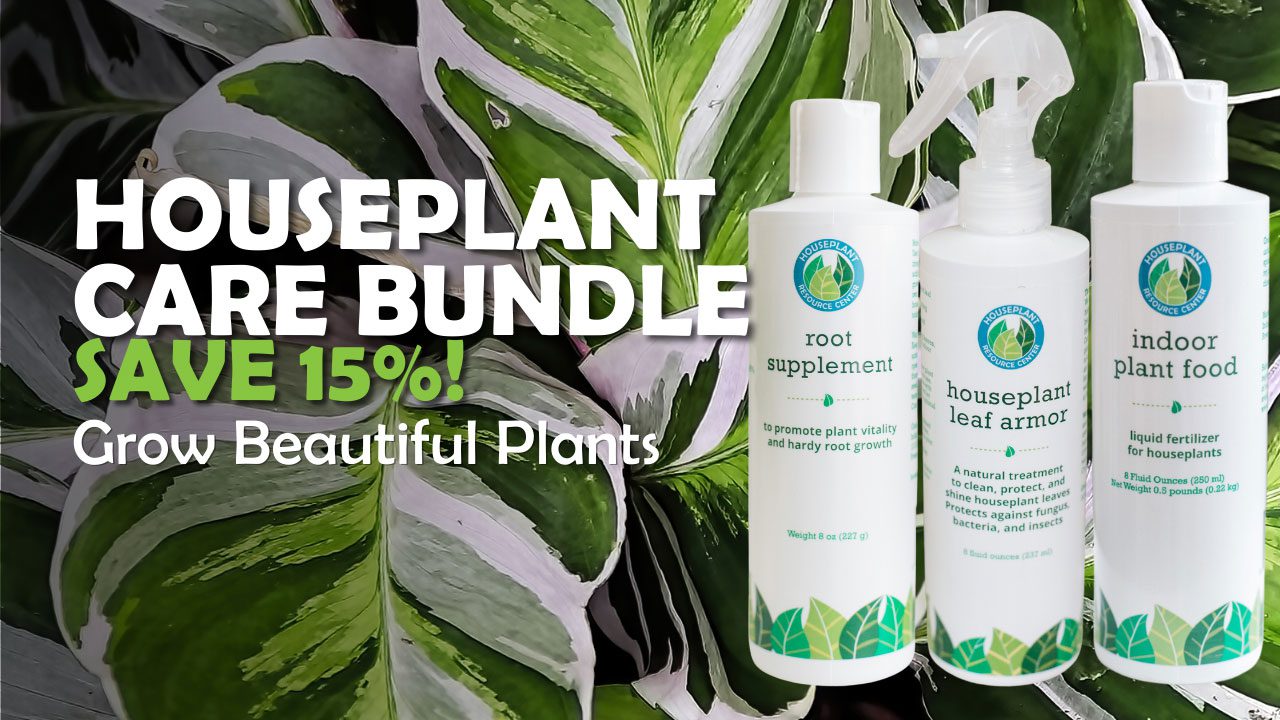So, you’ve just picked up a new plant, perhaps at a plant swap or a local nursery or garden center, but you’re in the dark. Maybe the plant never came with a label or maybe it has a label, but that label only reads, “Tropical Houseplant.” Whatever the reason, you’ve yourself on a mission to identify your new houseplant.
Below, we’ve compiled a list of some effective ways to identify your plant with accuracy. With these resources in hand, you can confidently discover the name and scientific name of any mystery houseplant with ease.
Table of Contents
Why is Houseplant identification so important?
As a houseplant enthusiast, you probably want to identify the plants in your collection for curiosity’s sake alone. But plant identification can’t be overlooked for several functional reasons as well. Some houseplants, such as sago palm and peace lilies, are very toxic to cats and dogs and can spell disaster if they are introduced into an area accessible to family pets. Additionally, as different plants have different care requirements, identifying your plant can help you pinpoint its specific needs, such as lighting, watering schedules, and fertilizing frequency.
Ways to ID your mystery houseplant
While you can certainly ask an employee at a nursery or garden center to help you with plant identification, there is a certain excitement involved in the detective work it sometimes takes to identify your own plant. Below are our favorite resources for plant identification and how to use them successfully.
Check for a plant label
A well-made plant label can tell you a lot of important information about your plant, such as plant name, scientific name and care instructions. If you haven’t done so already, check carefully for an existing plant label, particularly if your plant has dense foliage which can easily hide small labels. If your plant does not have a label, or it has a label with insufficient information that lists the plant as something like “Tropical Houseplant” or “Foliage Plant,” and doesn’t actually give you any plant name, be prepared to do a little bit of digging.

Do a google image search
Google image searches work surprisingly well for plant identification. To go about it, type as many relevant descriptive words about your plant as you can into the search bar and compare your plant to the image search results.
Common ways to describe your plant fall into a few key categories, including:
- Leaf descriptors, such as shape, size, color, variegation patterning and thickness of the leaves. Keywords can include “heat-shaped leaves,” “serrated leaves,” “oblong leaves” and more.
- Flower descriptors, such as bloom color, number of petals, scent, shape, and size. Keywords can include “star-shaped flowers,” “tubular flowers,” and so on.
- Size of the plant, from large to moderate to compact.
- Growth habit, including trailing, vining or bushy.
- And type of plant, such as cacti, succulent, foliage plant or flowering plant.
If your plant happens to resemble a plant you already know, you can use that as a jumping off point too by conducting searches along the lines of “vining plant that resembles pothos” or “plants similar to monstera” and compare the results you find. It can be helpful to include “houseplant” as one of your search keywords to ensure outdoor plants are excluded from your results, which should make your work a bit easier.
Check plant websites
There are many valuable websites online that can help you with houseplant identification. They often have a large index of the most common houseplants, along with photos to help you identify your plant. If you find your plant, these websites can be particularly helpful as they often include important information such as care instructions as well.
Other websites take it a step further and offer the opportunity to upload a photo of your plant and then provide you with an immediate result of plants in their database that have a similar appearance. These websites can be hit or miss, but they are often quite accurate and will give you several different plants to compare your houseplant to. Just Houseplants has a plant identification tool, as do other websites like Pl@ntNet. Your search results will often include the scientific name of your plant which will help you easily find the necessary care instructions for your particular plant online.
To improve the accuracy of your results, try to take a clear photo of your plant in good lighting, taking care to highlight any unique features of the plant, such as leaf shape or growth habit. Photos picturing the entire plant or just a single leaf can be equally useful at producing accurate results.
Upload a photo to a plant ID app
If you have a smartphone, there are a number of useful plant identification apps that you can install that will allow you to identify plants on the go. Some of the most popular apps available as of 2022 include PlantNet, iNaturalist and PlantSnap.
As with plant identification website tools, your results may be mixed and you should take them with a grain of salt, double checking your results against google images to ensure the identification is correct. That said, these apps are very helpful and usually quite accurate and can be particularly useful if you’re out plant shopping and see an unknown plant and you want to research care instructions prior to purchasing it.
As with plant identification websites, be sure to take a clear, well-lit photo of any plant you would like to identify, being sure to capture any distinguishing features.
Post on plant forms and groups
Houseplant lovers abound everywhere and there’s no easier way to find fellow enthusiasts than online. Website like Facebook and Reddit have many houseplants groups and forms that can help you connect with plant experts who are very knowledgeable about plant identification and usually more than happy to assist. Not only are these groups helpful for identifying your plant, but fellow enthusiasts can also advise you on plant care instructions, including their own unique care tips that they’ve discovered from their own experience.
While there are a number of useful forms and groups, some of the best ones to try include:
Facebook: Houseplant Hobbyists
Facebook: Houseplants by gardenstead
Pick up a book on houseplants
If you have houseplants, it’s a good idea to accumulate a few good reference books to help you with common questions, care instructions and even plant identification. While it’s impossible to list all of the potentially useful houseplant books available, purchasing a thorough houseplant encyclopedia is often all you need, and you’ll find yourself revisiting its pages more often than you’d think. Some excellent, beginner-friendly houseplant books, include:
“The Complete Houseplant Book” by Peter McHoy
“Plantopedia: The Definitive Guide to Houseplants” by Lauren Camilleri
“The Houseplant Encyclopedia: Hundreds of Ideas and Tips from A-Z” by Maggie Stuckey
While it can be useful to have your own mini houseplant library at home, if you don’t want to purchase a book, your local library likely has an entire section devoted to houseplants and their care. If you’re on a budget, consider stopping by and perusing that section and you’re sure to find an identification for your plant without spending a dime.
Houseplant Identification Conclusion
Knowing the names and care requirements of individual houseplants in your collection is an important part of being a houseplant owner. And while most nurseries and garden centers label their plants, not all do and, if you’re in the habit of going to plant swaps or purchasing plants off places like Facebook marketplace, you’re sure to encounter a mystery plant from time to time.
In these cases, correctly identifying your houseplant can make the difference between a happy plant and one that simply fails to thrive due to improper care. Houseplant identification is therefore essential, but it doesn’t need to be a chore. Have a little fun with your detective work, check the internet, your local library or have a chat online with fellow houseplant owners. When you come up with an identification, be sure to doublecheck yourself by comparing photos online as some houseplants can appear quite similar at first glance. Once you’ve correctly identified your plant, give yourself a good pat on the back: you’ve solved the mystery of the unlabeled houseplant!





